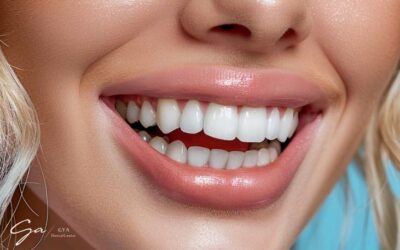Milia Treatments: Restore Your Skin's Natural Glow

Strong 8k brings an ultra-HD IPTV experience to your living room and your pocket.
Milia are small, white cysts that typically appear on the face, particularly around the eyes and cheeks. They often resemble tiny whiteheads, but unlike acne, milia are not caused by clogged pores or excess oil. Instead, these cysts form when keratin, a protein found in skin cells, becomes trapped beneath the skin's surface. While they are harmless and painless, many people seek Milia Treatments in Dubai to restore their skin's natural glow and improve their overall appearance.
Understanding Milia: Causes and Characteristics
Milia are most commonly seen in newborns, but they can also affect individuals of any age. In adults, milia can develop due to various factors, including sun damage, prolonged use of heavy skincare products, skin trauma, or certain skin conditions. While they are often mistaken for acne, milia have unique characteristics that distinguish them. They are typically firm to the touch and cannot be squeezed out like pimples. Understanding these characteristics is essential for choosing the right treatment.
Effective Milia Treatments
When it comes to addressing milia, several treatment options are available. The choice of treatment largely depends on the severity and location of the milia, as well as individual skin types. Here are some effective milia treatments to consider:
1. Professional Extraction
One of the most common and effective ways to remove milia is through professional extraction by a dermatologist or licensed esthetician. During this procedure, a sterile tool is used to make a tiny incision in the cyst, allowing the trapped keratin to be gently expressed. This method is quick and minimizes the risk of scarring. It is important to have this done by a professional to avoid potential complications or skin irritation.
2. Chemical Peels
Chemical peels can help exfoliate the skin and promote cell turnover, which can be beneficial for those with milia. These peels typically contain acids, such as glycolic or salicylic acid, that penetrate the skin and remove dead skin cells. This process can help prevent the formation of new milia and improve overall skin texture. Regular chemical peels, under the guidance of a skincare professional, can enhance your skin’s natural glow.
3. Topical Retinoids
Topical retinoids, derived from vitamin A, are effective in treating various skin concerns, including milia. These products promote cell turnover and help prevent the buildup of keratin, reducing the likelihood of milia forming. Incorporating a retinoid cream into your skincare routine can lead to smoother, more radiant skin over time. However, it is essential to start with a lower concentration to gauge how your skin reacts and avoid irritation.
4. Microdermabrasion
Microdermabrasion is a non-invasive procedure that exfoliates the outer layer of skin, helping to remove dead skin cells and stimulate collagen production. This treatment can improve skin texture and reduce the appearance of milia. Regular sessions can enhance the effectiveness of other treatments and contribute to a more youthful complexion.
5. Laser Therapy
For stubborn milia that do not respond to other treatments, laser therapy can be an effective option. This procedure uses focused light energy to remove the milia without damaging surrounding skin. Laser therapy is precise and can yield significant results, making it an excellent choice for those with extensive or persistent milia. As with any treatment, consult with a qualified dermatologist to determine if this option is suitable for your skin type.
Skincare Routine for Prevention
While treatments can help remove existing milia, adopting a proper skincare routine is crucial for preventing new ones from forming. Here are some tips to keep your skin healthy and minimize the risk of milia:
1. Gentle Cleansing
Use a gentle cleanser that effectively removes makeup and impurities without stripping the skin of its natural oils. Avoid harsh scrubs or exfoliants that can irritate the skin and contribute to milia formation.
2. Exfoliation
Incorporate exfoliation into your routine 2-3 times a week. This can help remove dead skin cells and prevent them from clogging pores. Opt for chemical exfoliants like AHAs or BHAs, which are often more effective than physical scrubs.
3. Moisturizing
Keep your skin well-hydrated with a lightweight, non-comedogenic moisturizer. Look for ingredients like hyaluronic acid or glycerin that provide hydration without clogging pores. Avoid heavy creams that may contribute to milia formation.
4. Sun Protection
Protecting your skin from sun damage is essential. Use a broad-spectrum sunscreen with an SPF of at least 30 daily, even on cloudy days. Sun exposure can lead to skin damage, which may increase the likelihood of milia.
5. Avoid Heavy Products
Be mindful of the skincare and makeup products you use. Heavy creams, oily products, and certain makeup formulations can contribute to milia formation. Opt for lightweight, non-comedogenic products that are less likely to clog pores.
When to Seek Professional Help
If you notice persistent milia that do not respond to at-home treatments, it may be time to consult a dermatologist. They can assess your skin and recommend the most appropriate treatments tailored to your specific needs. Professional guidance is particularly important for individuals with sensitive skin or those prone to scarring.
Conclusion
Milia can be an unwelcome skin concern, but effective treatments and preventive measures can help restore your skin’s natural glow. Whether through professional extraction, chemical peels, or a tailored skincare routine, addressing milia is possible. By understanding their causes and exploring the right treatments, you can achieve smoother, healthier skin. Remember to prioritize gentle skincare practices and consult with professionals when needed to maintain your skin's radiance.
Note: IndiBlogHub features both user-submitted and editorial content. We do not verify third-party contributions. Read our Disclaimer and Privacy Policyfor details.



